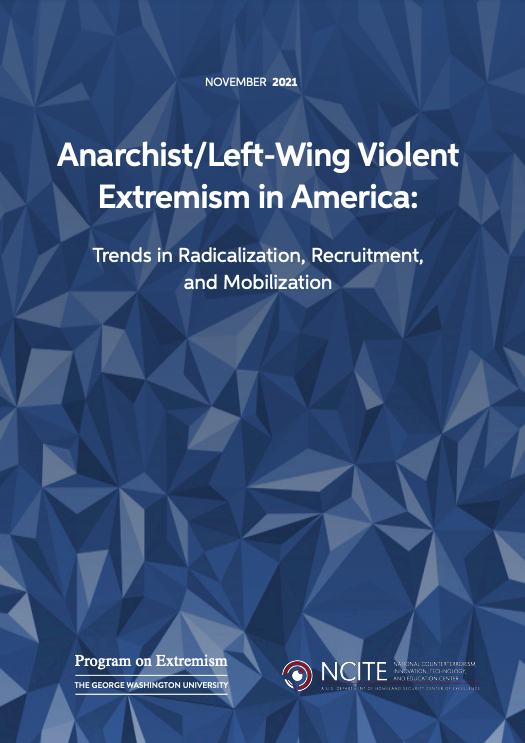Anarchist Violent Extremism in America
About
Thanks to support from the National Counterterrorism Innovation, Technology, and Education Center (NCITE), a Department of Homeland Security Center of Excellence, our team set out to explore the current threat level and future trajectories of anarchist/left-wing violent extremism in America. In November 2021, we released a report, Anarchist/Left-Wing Violent Extremism in America: Trends in Radicalization, Recruitment, and Mobilization, which offers an updated assessment of the threat.
Executive Summary
Anarchist/left wing violent extremism, often referred to in United States government parlance with the
catch-all term “anarchist violent extremism” (AVE), has a long-standing history in the U.S. The political climate in recent years has intensified focus, interest, and controversy surrounding the activities of specific left-wing extremist currents. Despite this, there is a dearth of quality, impartial, and non-partisan research on these groups and the individual violent extremists associated with them.
This paper attempts to situate AVE within the broader landscape of domestic violent extremist (DVE) threats facing the U.S. and chart the evolution of violent plots with a nexus to AVEs. A recent Federal Bureau of Investigation (FBI) and Department of Homeland Security (DHS) joint report that reviewed significant domestic terrorism incidents in the U.S. between 2015 and 2019 found that AVEs were among the extremist groups “presenting the greatest threats of violence.”Reviewing these incidents and charting the potential for future escalation of AVErelated attacks, this paper highlights three trends:
- Violence committed by AVEs in this period was largely locally organized, eventdriven, and/or opportunistic. However, individual AVEs inspired by the movement and its ideologies also planned mass-casualty terrorist attacks, predominantly against law enforcement, private property, and those they associate with opposing violent extremist groups.
- Individual AVEs also demonstrated interest in similar activities as other DVE groups—such as foreign fighter travel, disrupting government and/or electoral activities, and terrorism financing.
- Ongoing changes in the political, social, and economic climate in the U.S., as well as changes in the makeup, strength, and doctrines of other American domestic extremist groups, have the potential to escalate the frequency and lethality of violence committed by AVEs in the immediate future.


